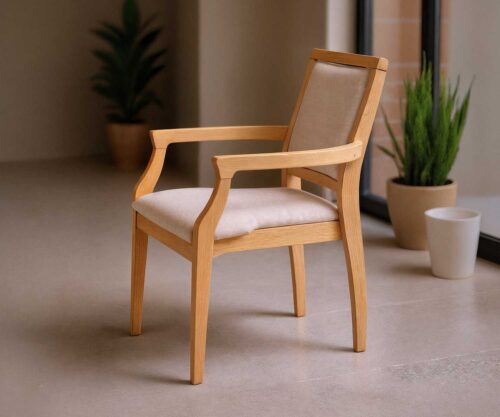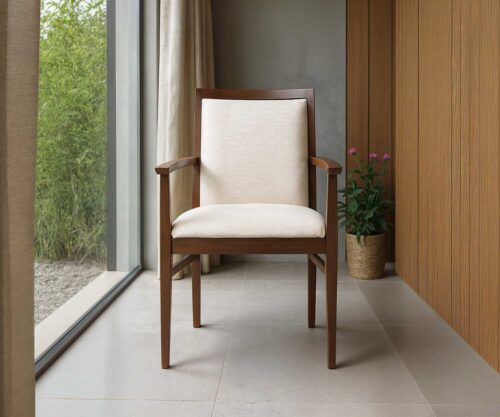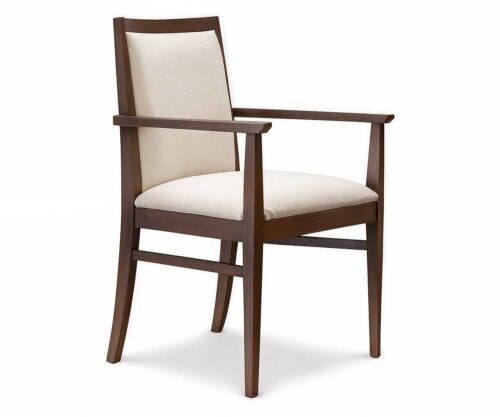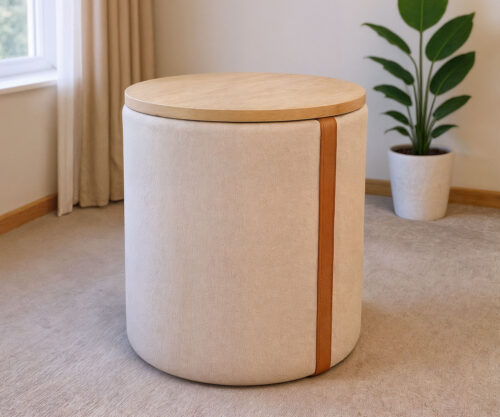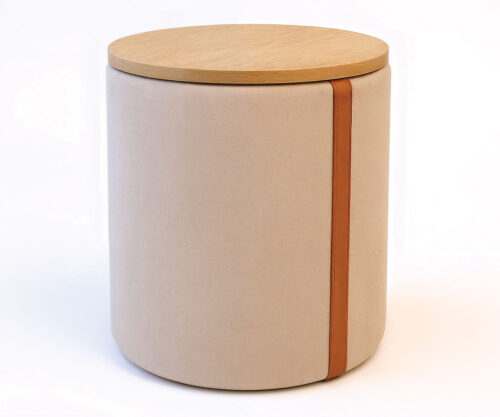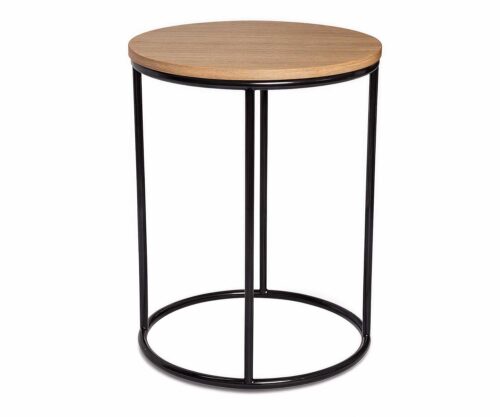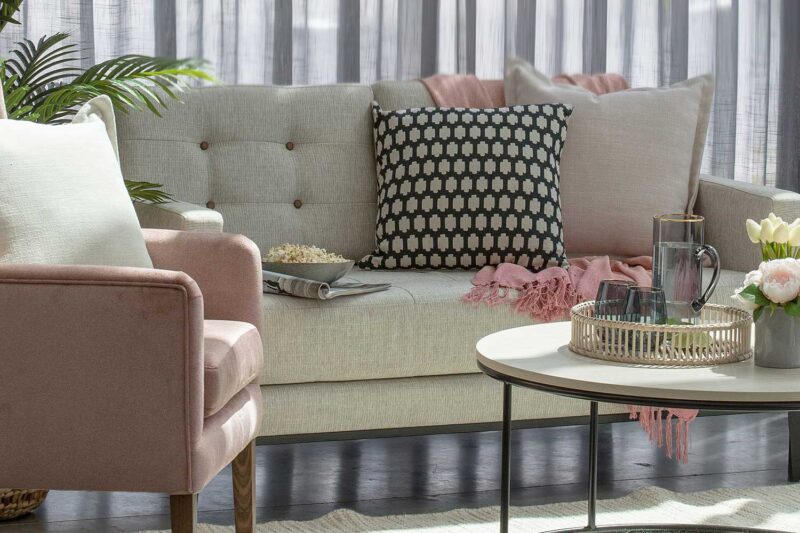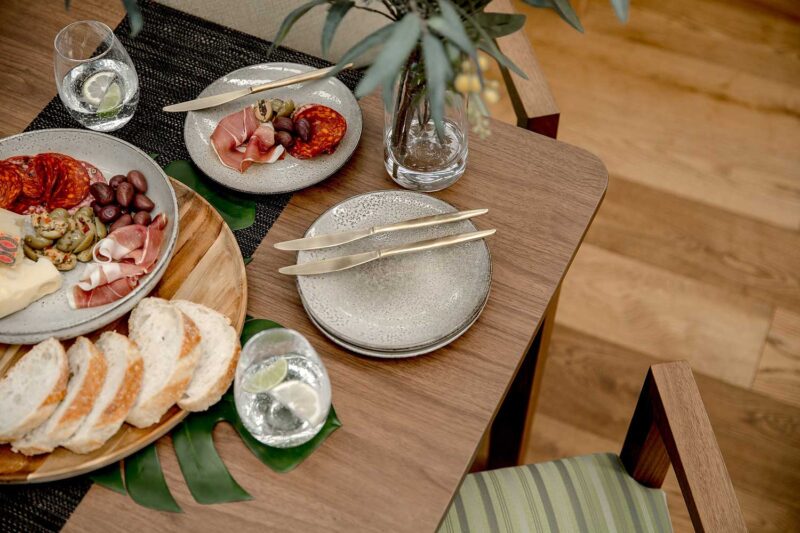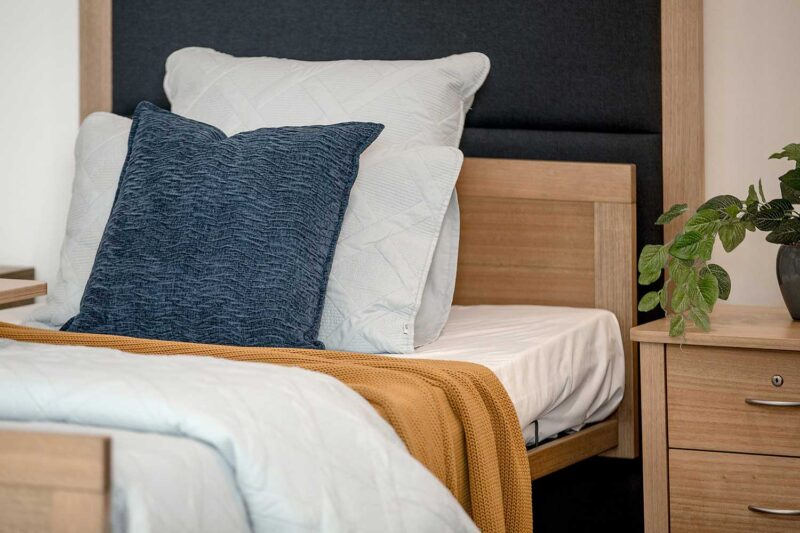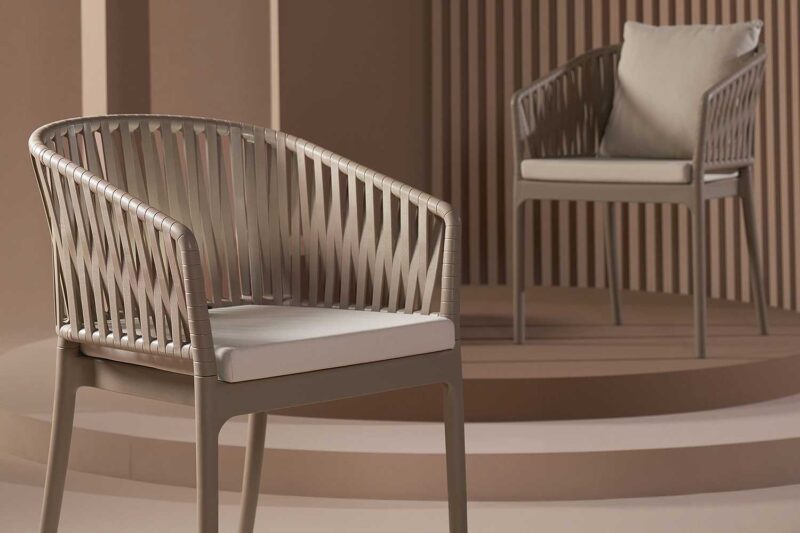One Supplier, Less Stress: How Integrated Furniture and Equipment Supply Simplifies Aged Care Projects

“The more suppliers involved, the more room there is for things to go wrong. Integration isn’t just convenient — it’s how you keep projects calm, compliant, and on track.” ~ Ross McCorkell, FHG Founder and Project Consultant
Managing an aged care facility means keeping an endless number of moving parts under control — residents, staff, compliance, maintenance, audits, and of course, suppliers. When it comes to furniture and equipment procurement, many managers find themselves stretched thin coordinating multiple vendors, quotes, deliveries, and installation teams.
Now that FHG is part of the Aidacare family, facility managers have access to something that’s been missing from the industry for years: a truly integrated furniture and equipment supply chain — where clinical function, resident comfort, and design all come from one trusted source.
This article explores how a single-supplier approach can save time, reduce stress, and help aged care managers deliver safer, more efficient environments — along with some practical steps to make the most of it.
Why Managing Multiple Suppliers Creates Stress
When each element of a project — beds, tables, chairs, mobility equipment, and room accessories — comes from a different supplier, the burden falls squarely on facility managers to keep it all aligned.
Common frustrations include:
-
Overlapping timelines: One supplier runs late and holds up another.
-
Miscommunication: Different contacts, pricing structures, and delivery requirements.
-
Budget creep: Separate freight and installation costs quickly add up.
-
Quality mismatches: Furniture looks residential, while equipment looks clinical.
In the end, you spend more time project-managing suppliers than managing your facility.
How Integrated Supply Solves Common Pain Points
1. One Point of Contact for the Entire Project
When you work with multiple suppliers, you become the middleperson — chasing updates, clarifying specifications, and troubleshooting delays. That constant coordination takes time away from staff and residents. By consolidating suppliers, you remove the communication tangle and create one clear line of accountability.
Instead of juggling multiple quotes or waiting on half a dozen installers, you can work with one dedicated project consultant who oversees:
-
Furniture selection and finish approvals
-
Equipment specifications and compliance checks
-
Delivery, installation, and aftercare coordination
Practical tip: Ask your consultant to provide a combined timeline for both furniture and equipment installation. This helps you plan resident moves, minimise downtime, and avoid unnecessary room closures.
2. Aligned Design and Clinical Function
It’s one thing for furniture to look good; it’s another for it to work seamlessly with the clinical demands of aged care. Too often, facilities end up with beautiful interiors that create challenges for carers — furniture that’s too low for transfers, surfaces that don’t meet infection control standards, or layouts that restrict mobility.
With FHG’s design team now collaborating directly with Aidacare’s equipment specialists, you get interiors that balance comfort, safety, and compliance.
For example:
-
Chair heights align with transfer equipment.
-
Surfaces meet infection control standards.
-
Mobility pathways are designed with equipment manoeuvrability in mind.
Practical tip: When approving designs, request both aesthetic samples (e.g., fabric boards) and functional drawings showing clearances for equipment use. This ensures beauty and practicality coexist.
3. Streamlined Procurement and Invoicing
Every facility manager knows the pain of multiple purchase orders, overlapping delivery dockets, and varying payment terms. Managing separate invoices for furniture, medical equipment, and freight can become a full-time job in itself. Integrated supply simplifies all of this by consolidating procurement into one system — one quote, one order, one invoice.
This approach also makes cost tracking far clearer. Instead of reconciling several spreadsheets, you can view your entire fit-out budget in one place, making reporting and approvals much smoother.
Practical tip: Keep a master procurement spreadsheet that lists every item and its installation date. With integrated supply, it becomes easier to match your budget, delivery, and warranty details in one place.
4. Faster, Coordinated Installation
Installation is often the most stressful phase of any refurbishment or upgrade. Residents need to be relocated temporarily, staff workflows are interrupted, and every delay costs time and money. When furniture and equipment come from different suppliers, these disruptions can easily multiply.
By working with a single supplier, delivery and installation can be planned as a single, coordinated process. The project team can stage deliveries by wing or floor, ensuring minimal disruption and avoiding the “half-finished” look that happens when items arrive out of sync.
Practical tip: Schedule installations in resident rotation blocks — one wing or area at a time — so care routines remain undisturbed and safety is maintained.
5. Consistent Quality and Ongoing Support
In a multi-vendor project, no one wants to take responsibility when something breaks or goes missing. Integrated supply eliminates that problem. With one supplier responsible for both furniture and equipment, there’s complete accountability — and more consistent quality control across your facility.
It also simplifies warranty management and maintenance. Instead of contacting three different suppliers for service requests, you deal with a single support channel that understands your products, your timelines, and your facility layout.
Practical tip: Set up a shared maintenance log (digital or paper) where staff can note any product issues. This allows you to report them through one central contact for faster resolution.
What to Look for in an Integrated Supplier
When choosing a single-source provider for aged care projects, look for:
✅ Australian furniture manufacturing capacity for reliability and quick turnaround
✅ Clinical expertise to ensure compliance and safe resident handling
✅ Custom design flexibility to maintain a homely aesthetic
✅ National service network for post-installation support
✅ Proven experience in aged care environments
Making the Shift to an Integrated Model: Where to Start
-
Review your current vendor list — identify where duplication or inefficiency exists.
-
Ask about integration options when planning refurbishments or new builds.
-
Involve your clinical and maintenance teams early — their input helps align product choices with real-world use.
-
Use data — track how much time or cost multiple suppliers add to a project, and use that as a baseline for comparison.
-
Evaluate total value, not just cost — integration often saves far more in downtime, warranty support, and safety outcomes than initial price differences suggest.
FAQ: Integrated Furniture and Equipment Supply for Aged Care
Q1: Does using one supplier limit my design choices?
Not at all. Integrated supply doesn’t mean cookie-cutter interiors — it means better coordination between design, manufacturing, and clinical teams. With FHG and Aidacare, you still have full flexibility in selecting styles, colours, and finishes. The key difference is that your furniture and equipment are designed to complement each other rather than compete for space or function.
Q2: Can I still use my preferred fabrics or finishes?
Yes. FHG’s Brisbane factory specialises in custom upholstery and timber finishes. You can select from your preferred supplier or from our recommended healthcare-rated options that meet fire safety and infection control standards. The integration simply ensures these materials are compatible with the clinical requirements of the equipment being used in each room.
Q3: What about maintenance after installation?
With one supplier, maintenance becomes far more straightforward. You no longer need to contact multiple vendors for different items. Aidacare’s national service network and asset tracking systems now support both furniture and equipment. That means one phone call or service ticket can cover everything from a recliner adjustment to a broken wheel on a bedside table.
Q4: Is this approach only for new builds?
No — it’s ideal for refurbishments and staged upgrades. Many aged care facilities are upgrading rooms or common areas wing by wing to minimise disruption to residents. Integrated supply ensures furniture and equipment arrive and install together, so no area is left half-finished while you wait for missing items.
Q5: How does this improve compliance?
Compliance in aged care covers everything from infection control to safe manual handling. When suppliers work separately, gaps can appear between design and clinical function — for example, furniture that blocks equipment access or materials that aren’t easy to clean. With integrated design and supply, compliance is considered from the very beginning, ensuring all items meet the relevant standards before installation.
Q6: How does it affect project timelines?
Integration shortens project timelines because there are fewer moving parts to manage. Coordinated production schedules mean furniture and equipment are ready at the same time, and installations are staged efficiently. Instead of chasing multiple lead times, you receive a single, consolidated schedule from one project consultant who manages everything from manufacture to delivery.
Q7: What if my facility has unique clinical needs or layout challenges?
That’s where integration really shines. Because furniture designers and clinical equipment specialists collaborate early, spaces can be customised to your residents’ needs — from bariatric rooms to dementia-friendly environments. Layouts, heights, and clearances can all be adjusted during design so that comfort and function are optimised together.
Q8: How does integrated supply affect costs?
While individual items may sometimes appear comparable in price, integrated supply delivers significant total project savings. You reduce freight duplication, installation labour, and administrative hours spent managing multiple vendors. The result is a smoother procurement process, fewer delays, and a clearer budget picture — all of which lower the real cost of delivering a project.
Q9: What kind of after-sales support can I expect?
After your project is complete, you have a single support channel for any product queries, replacements, or warranty claims. FHG and Aidacare also provide post-installation reviews to check product performance, gather staff feedback, and schedule follow-up maintenance if needed. This level of continuity helps extend product lifespan and ensures your investment keeps working for you.
Q10: How do I get started with integrated supply for my next project?
It starts with a conversation. Whether you’re planning a refurbishment, fit-out, or equipment upgrade, your local Aidacare Equipment Specialist can connect you with an FHG Project Consultant. Together, they’ll review your current supplier mix, assess opportunities for integration, and prepare a coordinated proposal that fits your timeline, budget, and compliance needs.
Final Thoughts
For aged care facility managers, time is the most precious resource. Every hour saved chasing suppliers or resolving delivery issues is an hour you can spend improving resident wellbeing and supporting your staff.
By bringing furniture and equipment under one roof, FHG and Aidacare are making it simpler than ever to plan, procure, and deliver projects that run smoothly from start to finish — and that’s a real advantage in today’s demanding aged care environment.
Custom Furniture for Aged Care
More News
One Supplier, Less Stress: How Integrated Furniture and Equipment Supply Simplifies Aged Care Projects

“The more suppliers involved, the more room there is for things to go wrong. Integration isn’t just convenient — it’s how you keep projects calm, compliant, and on track.” ~ Ross McCorkell, FHG Founder and Project Consultant
Managing an aged care facility means keeping an endless number of moving parts under control — residents, staff, compliance, maintenance, audits, and of course, suppliers. When it comes to furniture and equipment procurement, many managers find themselves stretched thin coordinating multiple vendors, quotes, deliveries, and installation teams.
Now that FHG is part of the Aidacare family, facility managers have access to something that’s been missing from the industry for years: a truly integrated furniture and equipment supply chain — where clinical function, resident comfort, and design all come from one trusted source.
This article explores how a single-supplier approach can save time, reduce stress, and help aged care managers deliver safer, more efficient environments — along with some practical steps to make the most of it.
Why Managing Multiple Suppliers Creates Stress
When each element of a project — beds, tables, chairs, mobility equipment, and room accessories — comes from a different supplier, the burden falls squarely on facility managers to keep it all aligned.
Common frustrations include:
-
Overlapping timelines: One supplier runs late and holds up another.
-
Miscommunication: Different contacts, pricing structures, and delivery requirements.
-
Budget creep: Separate freight and installation costs quickly add up.
-
Quality mismatches: Furniture looks residential, while equipment looks clinical.
In the end, you spend more time project-managing suppliers than managing your facility.
How Integrated Supply Solves Common Pain Points
1. One Point of Contact for the Entire Project
When you work with multiple suppliers, you become the middleperson — chasing updates, clarifying specifications, and troubleshooting delays. That constant coordination takes time away from staff and residents. By consolidating suppliers, you remove the communication tangle and create one clear line of accountability.
Instead of juggling multiple quotes or waiting on half a dozen installers, you can work with one dedicated project consultant who oversees:
-
Furniture selection and finish approvals
-
Equipment specifications and compliance checks
-
Delivery, installation, and aftercare coordination
Practical tip: Ask your consultant to provide a combined timeline for both furniture and equipment installation. This helps you plan resident moves, minimise downtime, and avoid unnecessary room closures.
2. Aligned Design and Clinical Function
It’s one thing for furniture to look good; it’s another for it to work seamlessly with the clinical demands of aged care. Too often, facilities end up with beautiful interiors that create challenges for carers — furniture that’s too low for transfers, surfaces that don’t meet infection control standards, or layouts that restrict mobility.
With FHG’s design team now collaborating directly with Aidacare’s equipment specialists, you get interiors that balance comfort, safety, and compliance.
For example:
-
Chair heights align with transfer equipment.
-
Surfaces meet infection control standards.
-
Mobility pathways are designed with equipment manoeuvrability in mind.
Practical tip: When approving designs, request both aesthetic samples (e.g., fabric boards) and functional drawings showing clearances for equipment use. This ensures beauty and practicality coexist.
3. Streamlined Procurement and Invoicing
Every facility manager knows the pain of multiple purchase orders, overlapping delivery dockets, and varying payment terms. Managing separate invoices for furniture, medical equipment, and freight can become a full-time job in itself. Integrated supply simplifies all of this by consolidating procurement into one system — one quote, one order, one invoice.
This approach also makes cost tracking far clearer. Instead of reconciling several spreadsheets, you can view your entire fit-out budget in one place, making reporting and approvals much smoother.
Practical tip: Keep a master procurement spreadsheet that lists every item and its installation date. With integrated supply, it becomes easier to match your budget, delivery, and warranty details in one place.
4. Faster, Coordinated Installation
Installation is often the most stressful phase of any refurbishment or upgrade. Residents need to be relocated temporarily, staff workflows are interrupted, and every delay costs time and money. When furniture and equipment come from different suppliers, these disruptions can easily multiply.
By working with a single supplier, delivery and installation can be planned as a single, coordinated process. The project team can stage deliveries by wing or floor, ensuring minimal disruption and avoiding the “half-finished” look that happens when items arrive out of sync.
Practical tip: Schedule installations in resident rotation blocks — one wing or area at a time — so care routines remain undisturbed and safety is maintained.
5. Consistent Quality and Ongoing Support
In a multi-vendor project, no one wants to take responsibility when something breaks or goes missing. Integrated supply eliminates that problem. With one supplier responsible for both furniture and equipment, there’s complete accountability — and more consistent quality control across your facility.
It also simplifies warranty management and maintenance. Instead of contacting three different suppliers for service requests, you deal with a single support channel that understands your products, your timelines, and your facility layout.
Practical tip: Set up a shared maintenance log (digital or paper) where staff can note any product issues. This allows you to report them through one central contact for faster resolution.
What to Look for in an Integrated Supplier
When choosing a single-source provider for aged care projects, look for:
✅ Australian furniture manufacturing capacity for reliability and quick turnaround
✅ Clinical expertise to ensure compliance and safe resident handling
✅ Custom design flexibility to maintain a homely aesthetic
✅ National service network for post-installation support
✅ Proven experience in aged care environments
Making the Shift to an Integrated Model: Where to Start
-
Review your current vendor list — identify where duplication or inefficiency exists.
-
Ask about integration options when planning refurbishments or new builds.
-
Involve your clinical and maintenance teams early — their input helps align product choices with real-world use.
-
Use data — track how much time or cost multiple suppliers add to a project, and use that as a baseline for comparison.
-
Evaluate total value, not just cost — integration often saves far more in downtime, warranty support, and safety outcomes than initial price differences suggest.
FAQ: Integrated Furniture and Equipment Supply for Aged Care
Q1: Does using one supplier limit my design choices?
Not at all. Integrated supply doesn’t mean cookie-cutter interiors — it means better coordination between design, manufacturing, and clinical teams. With FHG and Aidacare, you still have full flexibility in selecting styles, colours, and finishes. The key difference is that your furniture and equipment are designed to complement each other rather than compete for space or function.
Q2: Can I still use my preferred fabrics or finishes?
Yes. FHG’s Brisbane factory specialises in custom upholstery and timber finishes. You can select from your preferred supplier or from our recommended healthcare-rated options that meet fire safety and infection control standards. The integration simply ensures these materials are compatible with the clinical requirements of the equipment being used in each room.
Q3: What about maintenance after installation?
With one supplier, maintenance becomes far more straightforward. You no longer need to contact multiple vendors for different items. Aidacare’s national service network and asset tracking systems now support both furniture and equipment. That means one phone call or service ticket can cover everything from a recliner adjustment to a broken wheel on a bedside table.
Q4: Is this approach only for new builds?
No — it’s ideal for refurbishments and staged upgrades. Many aged care facilities are upgrading rooms or common areas wing by wing to minimise disruption to residents. Integrated supply ensures furniture and equipment arrive and install together, so no area is left half-finished while you wait for missing items.
Q5: How does this improve compliance?
Compliance in aged care covers everything from infection control to safe manual handling. When suppliers work separately, gaps can appear between design and clinical function — for example, furniture that blocks equipment access or materials that aren’t easy to clean. With integrated design and supply, compliance is considered from the very beginning, ensuring all items meet the relevant standards before installation.
Q6: How does it affect project timelines?
Integration shortens project timelines because there are fewer moving parts to manage. Coordinated production schedules mean furniture and equipment are ready at the same time, and installations are staged efficiently. Instead of chasing multiple lead times, you receive a single, consolidated schedule from one project consultant who manages everything from manufacture to delivery.
Q7: What if my facility has unique clinical needs or layout challenges?
That’s where integration really shines. Because furniture designers and clinical equipment specialists collaborate early, spaces can be customised to your residents’ needs — from bariatric rooms to dementia-friendly environments. Layouts, heights, and clearances can all be adjusted during design so that comfort and function are optimised together.
Q8: How does integrated supply affect costs?
While individual items may sometimes appear comparable in price, integrated supply delivers significant total project savings. You reduce freight duplication, installation labour, and administrative hours spent managing multiple vendors. The result is a smoother procurement process, fewer delays, and a clearer budget picture — all of which lower the real cost of delivering a project.
Q9: What kind of after-sales support can I expect?
After your project is complete, you have a single support channel for any product queries, replacements, or warranty claims. FHG and Aidacare also provide post-installation reviews to check product performance, gather staff feedback, and schedule follow-up maintenance if needed. This level of continuity helps extend product lifespan and ensures your investment keeps working for you.
Q10: How do I get started with integrated supply for my next project?
It starts with a conversation. Whether you’re planning a refurbishment, fit-out, or equipment upgrade, your local Aidacare Equipment Specialist can connect you with an FHG Project Consultant. Together, they’ll review your current supplier mix, assess opportunities for integration, and prepare a coordinated proposal that fits your timeline, budget, and compliance needs.
Final Thoughts
For aged care facility managers, time is the most precious resource. Every hour saved chasing suppliers or resolving delivery issues is an hour you can spend improving resident wellbeing and supporting your staff.
By bringing furniture and equipment under one roof, FHG and Aidacare are making it simpler than ever to plan, procure, and deliver projects that run smoothly from start to finish — and that’s a real advantage in today’s demanding aged care environment.
Custom Furniture for Aged Care
Discover the FHG Look Book: Your Source of Inspiration for Quality Australian-Made Commercial Furniture
- Quality Craftsmanship: See why we’ve been a trusted partner for over 25 years.
- Local Excellence: Learn how our Brisbane team ensures the highest standards.
- Inspiration and Ideas: Find innovative furniture solutions for any environment.
Don’t miss the opportunity to transform your commercial space with FHG’s expertly crafted furniture. Download the FHG Look Book today and start your journey towards exceptional design and quality.

